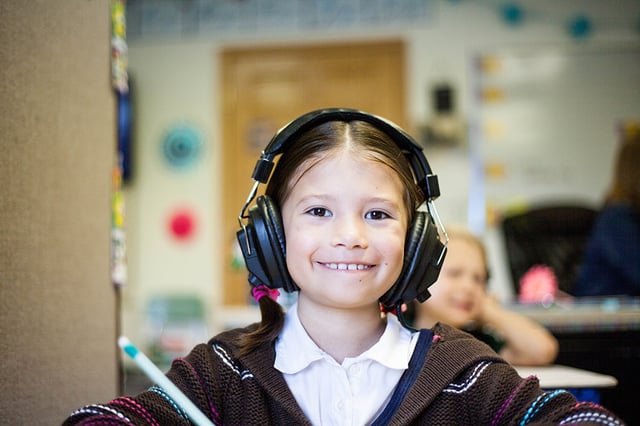Ask What Your Typing Software Can Do for You
 Written By equip team
Written By equip team
The importance of typing instruction in elementary classrooms is well established. And with a plethora of typing software to introduce students to this vital skill, elementary school teachers can easily implement typing instruction within their classrooms. But, how do educators decide which typing software programs will provide the most value to their students? To support, we will outline four attributes of leading solutions.
“NCTE (National Council of Teachers of English) and other respected educational organizations view digital skills such as keyboarding as essential for learners to communicate in the 21st century.”
Matt Renwick, Author & Principal
Focused on Typing Technique
Typing instruction should focus first and foremost on student typing technique. If students begin practicing on a keyboard without proper training, they create their own methods of finding the keys to type. Referred to as ‘hunting and pecking,’ this choppy practice results in poor habits that will eventually compromise overall typing abilities.
Typing is recognized as a motor skill, and training student fingers to respond correctly and quickly can be likened to athletic conditioning in which muscle training uses repetition until habit forms.
Indeed, proper typing technique improves typing accuracy and speed but also cultivates student confidence in their own abilities. The latter is an immeasurable benefit that will carry students as they develop additional digital skills, such as using business applications like Word or PowerPoint.
Gamified for Engaging Practice Opportunities
The science behind gamification in the classroom demonstrates positive outcomes on student learning. Jacqui Murray, who has taught K-8 technology for nearly 20 years, notes that 20 percent of a student’s learning experience should be through gaming, not just drills. According to her findings, “this keeps repetitive drills from getting boring and makes keyboard practice fun.”
Moreover, to supplement typing drills and make content more relevant, typing software should include game-based design elements to improve student engagement, comprehension, and retention.
Designed for Diverse Learning Styles
Educators today understand that students possess multiple learning styles. While visual, auditory, verbal, and kinetic learning styles are some traditional methods of classroom learning, the solitary, logical, and social methods are now also recognized as important ways students learn.
How can these be reflected in a typing solution?
- Visual: Animated fingers and color-coded keyboard
- Verbal: Word banks to provide content based on density (finger region or letter)
- Auditory: Correct and incorrect verbal cues
- Kinetic: Touch typing and animated fingers
- Solitary: Independent practice environment
- Social: Interactive in-class application exercises
- Logical: Dashboards to display results
Educators know first-hand that not all students are alike. Taking into consideration that students represent diverse ages and developmental skills with varying styles of learning, the need for a personalized learning approach to typing instruction is imperative.
Personalized Based on Formative Typing Assessment
Formative assessment in a typing solution provides targeted instruction based on students’ abilities. Specifically, formative typing assessment supports:
- Adapted instruction based on evidence to personalize student learning
- Accessible evidence of progress for students to actively manage and adjust their own learning
To that point, when students use feedback from their teachers to learn how to self-assess and set goals, they increase ownership of their own success. Teachers and students collaborate in an ongoing process using assessment information to improve, rather than judge, learning. It all hinges on the assessment’s ability to provide timely, understandable, and descriptive feedback to teachers and students.
And with the digital nature of typing instruction, typing software allows for continuous assessment of student progress and subsequent guided practice to reinforce proper typing technique and elevate student learning. At the same time, students can track their own growth and apply feedback to improve their technique, including typing speed and accuracy.
While students of all abilities and income levels have access to games, phones, and electronic devices that require them to point and click or to swipe on a screen, typing instruction still requires diligent classroom practice. Modern tools, adaptive learning resources, and individualized teaching materials, coupled with muscle memory training, are integral to equipping students with foundational digital literacy skills.
To end, an EmergingEdTech article explains: “Students need to know how to use the keyboard to write their essays, reports, and papers, whether they’re submitted through the teacher’s home page or printed out to hand in for their grade. Over the course of one school year alone, students can save hours of typing time by learning to touch type. Without these essential [typing] skills, many students risk falling behind in their classwork, something that will impact their performance throughout their school years and even affect their employability as adults.”
Explore additional strategies for developing effective typing curriculum in this on-demand webinar.




